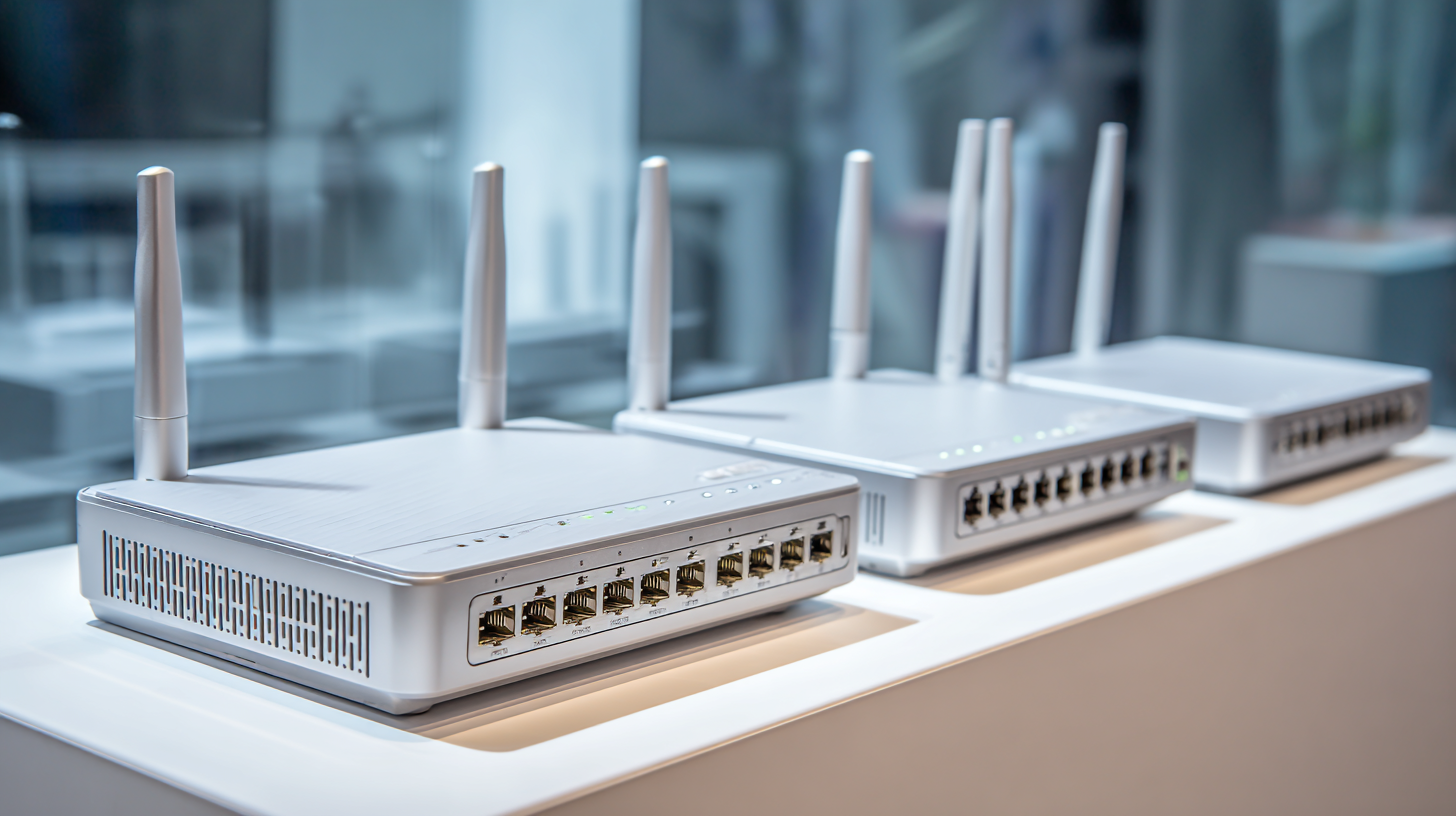In today's fast-paced digital landscape, optimizing network performance is essential for businesses to maintain a competitive edge. Mx Series Routers play a pivotal role in enhancing connectivity and ensuring seamless data transmission across various applications. These advanced routing solutions are designed to maximize bandwidth efficiency, reduce latency, and improve overall network resilience. In this guide, we will explore practical strategies and best practices for leveraging Mx Series Routers to achieve peak network performance.

From configuration tips to performance monitoring techniques, understanding how to effectively utilize these routers will empower organizations to streamline their operations and support their growing digital demands. Join us as we delve into the intricacies of optimizing your network infrastructure with Mx Series Routers, setting the stage for improved performance and reliability.
Mx Series Routers are designed to meet the demands of modern network environments, providing advanced features that facilitate optimal performance. With integrated security, these routers safeguard data without compromising speed. The built-in threat detection and response capabilities allow for real-time protection against potential vulnerabilities, ensuring that network integrity remains intact. Additionally, their cloud-managed architecture simplifies troubleshooting and maintenance, which is essential for reducing downtime and enhancing overall reliability.
Another significant advantage of Mx Series Routers is their scalability, making them suitable for both small businesses and large enterprises. The routers support a variety of bandwidth options and can easily adapt to fluctuating workloads, promoting efficient resource allocation. Furthermore, their robust analytics provide insights into traffic patterns and performance metrics, allowing administrators to make informed decisions regarding network optimization. This level of visibility ensures that organizations can respond swiftly to changing conditions, maximizing productivity and user experience.
| Feature | Description | Benefits for Network Optimization |
|---|---|---|
| High Throughput | Supports high-speed data transfer to manage large volumes of traffic. | Enhances overall network capacity and reduces congestion. |
| Advanced Security Features | Includes firewall, VPN, and intrusion detection/prevention systems. | Protects network integrity and data from unauthorized access. |
| Scalability | Easily scalable to accommodate growing network demands. | Ensures long-term usability without needing complete system overhauls. |
| Cloud Management | Provides easy management and monitoring of network devices remotely. | Increases administrative efficiency and allows for real-time adjustments. |
| Quality of Service (QoS) | Prioritizes bandwidth allocation for critical applications. | Improves performance for important tasks while managing overall traffic. |
To optimize network performance with Mx Series routers, it's critical to focus on several key strategies during configuration. First, ensure that QoS (Quality of Service) settings are accurately configured to prioritize traffic based on the needs of your organization. By assigning higher priority to critical applications, such as VoIP and video conferencing, you can significantly reduce latency and improve user experience. Additionally, implementing bandwidth management strategies will help allocate resources effectively, avoiding congestion during peak usage times.
Another important strategy involves regularly updating the router's firmware and security settings. Keeping the firmware up-to-date not only enhances performance but also protects the network from vulnerabilities. Moreover, consider segmenting your network using VLANs (Virtual Local Area Networks) to improve traffic management and isolate sensitive data. This layered approach ensures that your Mx Series routers operate at their best, providing secure and efficient connectivity across the entire network.
Implementing Quality of Service (QoS) with Mx Series Routers is essential for optimizing network performance, especially in environments utilizing Wireless Mesh Networks (WMN). QoS allows network administrators to prioritize traffic, ensuring that critical applications receive the necessary bandwidth while minimizing latency and interruptions for essential services. By effectively managing resources, Mx Series Routers can significantly enhance user experience and maintain smooth network operations.

To optimize QoS using Mx Series Routers, consider these tips:
By strategically applying these QoS practices, organizations can improve their overall network efficiency and reliability, leading to a better experience for all users.
Monitoring and troubleshooting network performance is crucial for maintaining optimal operations in any organization. Meraki MX Series Routers offer robust tools that allow network administrators to keep a pulse on their network's health. According to a report by the International Data Corporation (IDC), businesses that effectively monitor their network performance can enhance operational efficiency by up to 30%. This improvement is largely attributed to reduced downtime and quicker identification and resolution of issues.
The MX Series routers come equipped with advanced monitoring features, including traffic analytics and real-time alerts. These capabilities enable IT teams to detect anomalies and understand traffic patterns, as highlighted in a recent report by Gartner, which found that proactive monitoring can prevent up to 70% of network-related disruptions. By leveraging these insights, organizations can ensure consistent performance and adapt swiftly to changing demands, optimizing both user experience and resource allocation. Furthermore, the ability to troubleshoot issues remotely with the MX Series tools not only saves time but also reduces the reliance on on-site interventions, streamlining overall network management.
To enhance the network integrity of Mx Series Routers, implementing robust security settings is essential. Start by enabling automatic firmware updates to ensure your router is always equipped with the latest security features. These updates often patch vulnerabilities and improve device performance. Additionally, configuring strong passwords for both the router admin interface and the Wi-Fi network is crucial. A unique, complex password greatly reduces the risk of unauthorized access.

Another best practice involves segmenting your network through VLANs. By creating separate networks for different user groups or devices, you can mitigate the risks of a security breach spreading across your entire system. Employing firewalls and access control lists (ACLs) can further enhance security, allowing only authorized devices and users to interact with sensitive parts of your network. Regularly monitoring network traffic for any unusual activity can also help in promptly identifying potential threats and responding appropriately.








